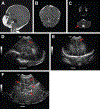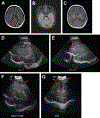Zika virus and the nonmicrocephalic fetus: why we should still worry
- PMID: 30171843
- PMCID: PMC6501788
- DOI: 10.1016/j.ajog.2018.08.035
Zika virus and the nonmicrocephalic fetus: why we should still worry
Abstract
Zika virus is a mosquito-transmitted flavivirus and was first linked to congenital microcephaly caused by a large outbreak in northeastern Brazil. Although the Zika virus epidemic is now in decline, pregnancies in large parts of the Americas remain at risk because of ongoing transmission and the potential for new outbreaks. This review presents why Zika virus is still a complex and worrisome public health problem with an expanding spectrum of birth defects and how Zika virus and related viruses evade the immune response to injure the fetus. Recent reports indicate that the spectrum of fetal brain and other anomalies associated with Zika virus exposure is broader and more complex than microcephaly alone and includes subtle fetal brain and ocular injuries; thus, the ability to prenatally diagnose fetal injury associated with Zika virus infection remains limited. New studies indicate that Zika virus imparts disproportionate effects on fetal growth with an unusual femur-sparing profile, potentially providing a new approach to identify viral injury to the fetus. Studies to determine the limitations of prenatal and postnatal testing for detection of Zika virus-associated birth defects and long-term neurocognitive deficits are needed to better guide women with a possible infectious exposure. It is also imperative that we investigate why the Zika virus is so adept at infecting the placenta and the fetal brain to better predict other viruses with similar capabilities that may give rise to new epidemics. The efficiency with which the Zika virus evades the early immune response to enable infection of the mother, placenta, and fetus is likely critical for understanding why the infection may either be fulminant or limited. Furthermore, studies suggest that several emerging and related viruses may also cause birth defects, including West Nile virus, which is endemic in many parts of the United States. With mosquito-borne diseases increasing worldwide, there remains an urgent need to better understand the pathogenesis of the Zika virus and related viruses to protect pregnancies and child health.
Keywords: Congenital Zika Syndrome; Zika virus; birth defect; microcephaly; pregnancy.
Copyright © 2018. Published by Elsevier Inc.
Conflict of interest statement
The authors report no conflict of interest.
Figures




Similar articles
-
Testing for Zika virus infection in pregnancy: key concepts to deal with an emerging epidemic.Am J Obstet Gynecol. 2017 Mar;216(3):209-225. doi: 10.1016/j.ajog.2017.01.020. Epub 2017 Jan 23. Am J Obstet Gynecol. 2017. PMID: 28126366 Review.
-
Birth Defects Among Fetuses and Infants of US Women With Evidence of Possible Zika Virus Infection During Pregnancy.JAMA. 2017 Jan 3;317(1):59-68. doi: 10.1001/jama.2016.19006. JAMA. 2017. PMID: 27960197
-
Vital Signs: Update on Zika Virus-Associated Birth Defects and Evaluation of All U.S. Infants with Congenital Zika Virus Exposure - U.S. Zika Pregnancy Registry, 2016.MMWR Morb Mortal Wkly Rep. 2017 Apr 7;66(13):366-373. doi: 10.15585/mmwr.mm6613e1. MMWR Morb Mortal Wkly Rep. 2017. PMID: 28384133 Free PMC article.
-
Femur-sparing pattern of abnormal fetal growth in pregnant women from New York City after maternal Zika virus infection.Am J Obstet Gynecol. 2018 Aug;219(2):187.e1-187.e20. doi: 10.1016/j.ajog.2018.04.047. Epub 2018 May 5. Am J Obstet Gynecol. 2018. PMID: 29738748 Free PMC article.
-
Congenital Abnormalities: Consequence of Maternal Zika Virus Infection: A Narrative Review.Infect Disord Drug Targets. 2017;17(1):3-13. doi: 10.2174/1871526516666161018104916. Infect Disord Drug Targets. 2017. PMID: 27758685 Review.
Cited by
-
Emerging Infectious Diseases Are Virulent Viruses-Are We Prepared? An Overview.Microorganisms. 2023 Oct 24;11(11):2618. doi: 10.3390/microorganisms11112618. Microorganisms. 2023. PMID: 38004630 Free PMC article. Review.
-
EVs Containing Host Restriction Factor IFITM3 Inhibited ZIKV Infection of Fetuses in Pregnant Mice through Trans-placenta Delivery.Mol Ther. 2021 Jan 6;29(1):176-190. doi: 10.1016/j.ymthe.2020.09.026. Epub 2020 Sep 20. Mol Ther. 2021. PMID: 33002418 Free PMC article.
-
Pathophysiology and Mechanisms of Zika Virus Infection in the Nervous System.Annu Rev Neurosci. 2019 Jul 8;42:249-269. doi: 10.1146/annurev-neuro-080317-062231. Annu Rev Neurosci. 2019. PMID: 31283901 Free PMC article. Review.
-
School-age child neurodevelopment following antenatal Zika virus exposure.Pediatr Res. 2025 Mar 19:10.1038/s41390-025-03981-7. doi: 10.1038/s41390-025-03981-7. Online ahead of print. Pediatr Res. 2025. PMID: 40108430
-
Language delay was associated with a smaller head circumference at birth in asymptomatic infants prenatally exposed to the Zika virus.Acta Paediatr. 2021 Aug;110(8):2375-2381. doi: 10.1111/apa.15878. Epub 2021 May 3. Acta Paediatr. 2021. PMID: 33872416 Free PMC article.
References
-
- Kleber de Oliveira W, Cortez-Escalante J, De Oliveira WT, do Carmo GM, Henriques CM, Coelho GE, et al. Increase in Reported Prevalence of Microcephaly in Infants Born to Women Living in Areas with Confirmed Zika Virus Transmission During the First Trimester of Pregnancy - Brazil, 2015. MMWR Morb Mortal Wkly Rep 2016;65(9):242–7. - PubMed
-
- Gulland A Zika virus is a global public health emergency, declares WHO. BMJ 2016;352:i657. - PubMed
-
- Melo AS, Aguiar RS, Amorim MM, Arruda MB, Melo FO, Ribeiro ST, et al. Congenital Zika Virus Infection: Beyond Neonatal Microcephaly. JAMA Neurol 2016;73(12):1407–16. - PubMed
-
- Mlakar J, Korva M, Tul N, Popovic M, Poljsak-Prijatelj M, Mraz J, et al. Zika Virus Associated with Microcephaly. N Engl J Med 2016. - PubMed
-
- Petersen LR, Jamieson DJ, Powers AM, Honein MA. Zika Virus. N Engl J Med 2016;374(16):1552–63. - PubMed
Publication types
MeSH terms
Grants and funding
LinkOut - more resources
Full Text Sources
Other Literature Sources
Medical

